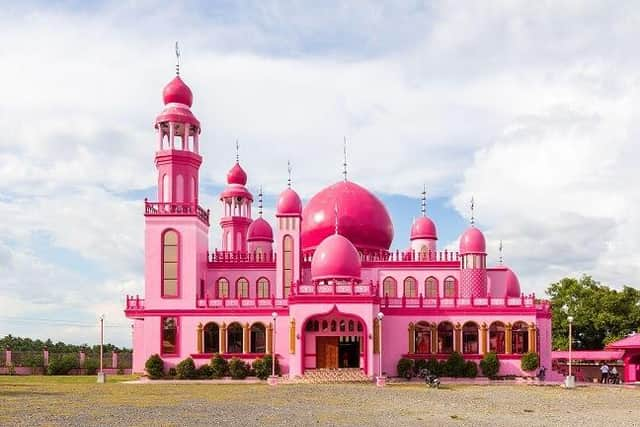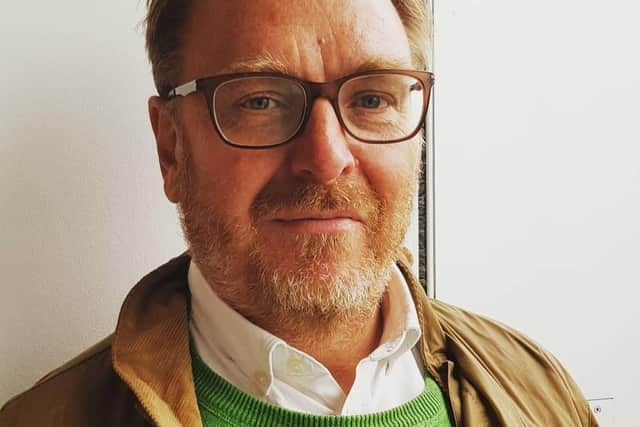Rishworth author Eric Broug on his new book Islamic Architecture: A World History
In all its rich diversity, Islamic design has interested Calderdale author Eric Broug for decades - a passion which remains undimmed after bringing out his latest, fourth book on the subject.
Islamic Architecture: A World History, released by Thames & Hudson, explores both famous masterpieces and lesser known gems, revealing a huge variety of building types, regional styles and architectural details across 1,400 years.
Advertisement
Hide AdAdvertisement
Hide AdEric, 56, grew up in Gouda in Holland, Indonesia and Australia, and was in his third year of studying Middle Eastern politics at university in Amsterdam when he had a change of heart.


“I thought, well, I want to do something bigger, something more of a challenge,” he says. “I didn't know what that challenge was, but I knew it wasn’t Middle Eastern politics. And then after I dropped out of university, I came across a book on Islamic geometric design. But it just showed you the result, not the process. And I thought this is really interesting, this is something that I can commit to. But I thought, well if I'm going to do this, then I have to do it 100 per cent and not as a hobby, but properly. So that's the deal I made with myself and I've stuck with it.”
He decided to sell his house in the Netherlands capital and came to England in 2000, eventually settling on studying for a Masters in the History of Islamic art and architecture at the School of Oriental and African Studies (SOAS) in London.
“I remember coming to London and going from one capital city from Amsterdam to London, thinking it would be comparable but in the first weekend realising that, you know, if you look at a page in the A to Z in London, from the top of the page to the bottom of the page, it used to take the three hours. In Amsterdam you would be out of the city, basically.”
Advertisement
Hide AdAdvertisement
Hide AdEric met his wife, Kalwa, in London but the pair uprooted to the north when she secured work. Having lived in Saltburn and Bradford, they’re now based in Rishworth.


He says: “I committed myself to Islamic geometric design as something that I really wanted to do when I was in my 20s but because you can't learn that in Holland, that's ultimately why I came to the UK and you know, I love the UK. I love Yorkshire. You could do a lot worse than living in Calderdale.”
Eric, who’s a Christian and attends church in Bradford, adds: “What I liked about (Islamic design) is it’s art, it’s history and it's science, it's under-researched, it's creativity. It was all these things and it was exciting - it still is exciting. I know there are always new things to learn. There are always new ways to explain it. New things to make. It's never boring for me. And it's been like that forever, basically.”
Eric delivers workshops and lectures around the world, and consults on various educational and design projects in the Middle East and elsewhere.
Advertisement
Hide AdAdvertisement
Hide AdHis previous titles for Thames & Hudson include Islamic Geometric Patterns (2008), Islamic Geometric Design (2013) and Islamic Design Workbook (2016).
“The things I love about Islamic visual culture changes,” he says. “In the beginning, it's the excitement of teaching yourself something new and being able to draw these patterns and for every good pattern you draw, there's 10 that don't make it to the finish line. And then later on the excitement comes from explaining it to other people or putting it in a book that people love or find useful, or doing workshops. So there are always new things to discover. And that's still the case.”
With more than 1,000 years to explore, where does he start?
“You just have to think, what's going to be the most effective and impactful for the reader. And for me, because I didn't do my PhD, I did my masters and then left London, that's turned out to be a blessing in many ways, because I don't have to write for my peers. I can pitch it at the level that I want to pitch it at, which is people who are interested but perhaps have a little bit of knowledge or even no knowledge and that's who I write for.
“For me to write books on Islamic geometric design that are genuinely useful, or to do a book on Islamic architecture that's beautiful and interesting, for me that's freedom.”
Advertisement
Hide AdAdvertisement
Hide AdThe first picture in the Africa section of the book – which is organised by region - is theKutubiyya Mosque in the heart of Marrakech, Morocco, a country rocked by a deadly earthquake in early September.
“I saw a video of this earthquake and it's (the mosque) still standing but you saw dust clouds billowing from the sides of the building,” says Eric. “It's terrible.”
The book is illustrated by pictures taken all over the world.
“The amazing thing is, why this book could only be written now and not, for example, five years ago is that there are so many more people (taking pictures) in countries around the world from which you would normally not find photos of Islamic architecture,” says Eric.
Advertisement
Hide AdAdvertisement
Hide Ad“But now you do because people invest in a professional camera, they travel a little bit to document a building that's not far from where they live, or in the country at least, and then sometimes upload it to commercial photo agencies, which means I can use it. So all of a sudden buildings that have never been documented in Ivory Coast or in Niger or or Burkina Faso, or you name it, all of a sudden we can make them nice and big on the page of a book.”
Islamic Architecture: A World History is out now.